The original text comes from zachdavidson.eth, and the following is the full text compilation.
Let’s face it, we all know that getting on the road in the crypto space is a cumbersome process — mostly beset by token hooligans and speculators whose sole purpose is to line their own pockets. Apart from centralized products like Coinbase Earn, there is no education system dedicated to teaching users the ins and outs of interacting on-chain.
Today's onboarding process is inaccessible, incomprehensible, and completely owned by people who can benefit greatly from the "onboarding ecosystem".
From an accessibility standpoint, think about when you first heard about the crypto space - buzzwords abound: "How do I get started?" someone might ask. "Oh," you'll say, "first you'll need a non-custodial wallet with various ERC-20 tokens in it. You'll want to go to your favorite centralized exchange, buy some tokens, and have them delivered to you In your wallet, exchange some other tokens on decentralized exchanges. If you still want to be active, lock them in some high-yield DeFi protocols to maximize your returns. You will soon It's time to farm!"
If you know nothing about the crypto world, you might be staring at the screen like this:

While crypto Twitter jargon and memes bring together insiders, they don’t actually help newcomers enter the space — providing something cohesive within crypto and exclusivity outside.
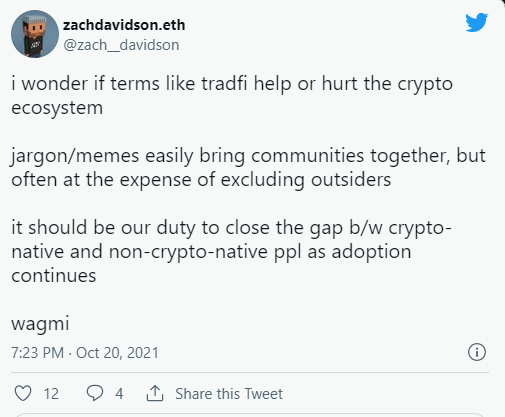
Similarly, the divide between crypto-native and non-crypto-native people continues to widen because we have yet to convince the public that crypto is more than just "currency". In fact, most crypto is not a currency at all - it is the gas of the protocol, a tool of a specific ecology, not money.
Not to mention, our discussions about crypto are dominated by influencers whose opinions become the iron law. Thought leaders tweet the same thing all the time: wealth codes or project calls to make sure they’re never the last ones.
first level title
1
Decentralized identity and encrypted credentials
As we move into a crypto-native world, we start to rethink the status quo of the internet. In creating web3, we worked towards the original vision for the Internet - an open web owned + operated by users. With this vision comes the ability to have a more transferable online identity and belonging to a community - made possible through decentralized identities (DIDs).
Decentralized identity lets us link together individual wallet addresses, creating a more aggregated view of our online presence. Services like BrightID and ENS allow us to prove we are human, add digital identities to our wallets, and let us speak with action, but it is decentralized identity that brings together the separate parts of our online identities.
Using decentralized identities, we can realize the core vision of the rabbit hole, which is to create "on-chain meritocracy" with cryptographic credentials - a way to prove an individual's expertise or reputation based on on-chain activity. means - but the main bottleneck to this vision is the centralization of our company.
first level title
2
Why you need a Rabbit Hole DAO

Rabbit Hole is already the market leader in crypto protocol token distribution + customer acquisition. We have distributed hundreds of thousands of dollars in token rewards to users around the world, while creating a "learn-to-earn" model to incentivize people to participate in crypto projects, rather than purely speculate. From where Earn.com falls short, the rabbit hole focuses on users' on-chain track records, awarding tokens and credentials based on their transaction history, helping us figure out how to find the right person for the right job at the right time Answer. At scale, the Rabbit Hole will become the go-to source for internet jobs.
We believe that the future of work is based on a person's contributions to the various organizations that interest them most. DAOs open up new paradigms for democratic governance and organizational coordination of people with similar interests and values, so at the core of our vision is to be a DAO that helps usher in this new era ourselves.
1. Scale while maintaining decentralization
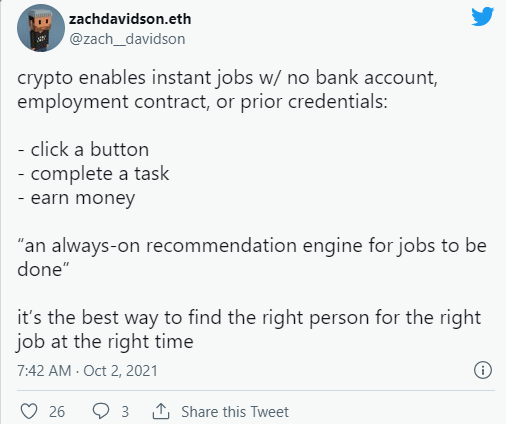
For DAO to reach a corresponding scale, traditional marketing is not enough. Therefore, in our transition from a company to a DAO, we had to build a tight-knit community of DAO contributors who could synergize with (and eventually replace) the core Rabbit Hole team to operate the network.
Becoming a DAO not only allows us to become larger than a centralized corporation, it also helps us coordinate and mobilize a working team of learners and monetizers who will act as sherpas for potential new crypto users . These contributors are known as pathfinders — crypto missionaries who want to spread the culture, leverage the talents of others in design, marketing, engineering, etc. to bring the next billion people to Web3.
Think of it this way: if Rabbit Hole is a game, Pathfinder is the game designer.
Pathfinder consists of several core working groups:
Trailblazers - content creators are building Web3's Alexandria Library, a knowledge hub with everything you need to know to get started in crypto
Artisans - a diverse collective of designers + artists that craft NFT rewards for rabbit hole quests and outsource design services to other DAOs in the Web3 ecosystem
Admins - scouts + alpha hunters + work with crypto protocols to scale on behalf of Rabbit Hole DAOs via meta governance
Navigator — web3 developers design task templates with built-in cryptoeconomic incentives to upskill developers and help them participate in DAOs
Explorers - data analysts looking for signals in the noise, exploring various blockchains to compile case studies that demonstrate the rabbit hole of the mission and the value of the protocol
We've quietly rolled out Harbingers and Artisans, and we'll be opening up the remaining characters soon. If any of these resonate with you, please get in touch!
Each working group will provide a path for new crypto users to start working in the DAO, while providing new work and mentoring opportunities for more experienced contributors. Together, these working groups create a vast network of web3 resources for individual contributors and the crypto ecosystem as a whole.
As a result, Rabbit Hole DAOs can reach a larger scale than most other DAOs in the space, while providing members with an on-ramp to showcase their skills and share in the growth of the community. However, for it to be worthwhile, our DAO and protocol must be neutral and reliable, allowing members to dictate the direction and depth of its growth.
2. Coordinate + empower core contributors
To maintain trustworthy neutrality, an organization needs to coordinate and empower its core contributors. For Rabbit Hole DAOs, coordination and empowerment act like a flywheel as follows:
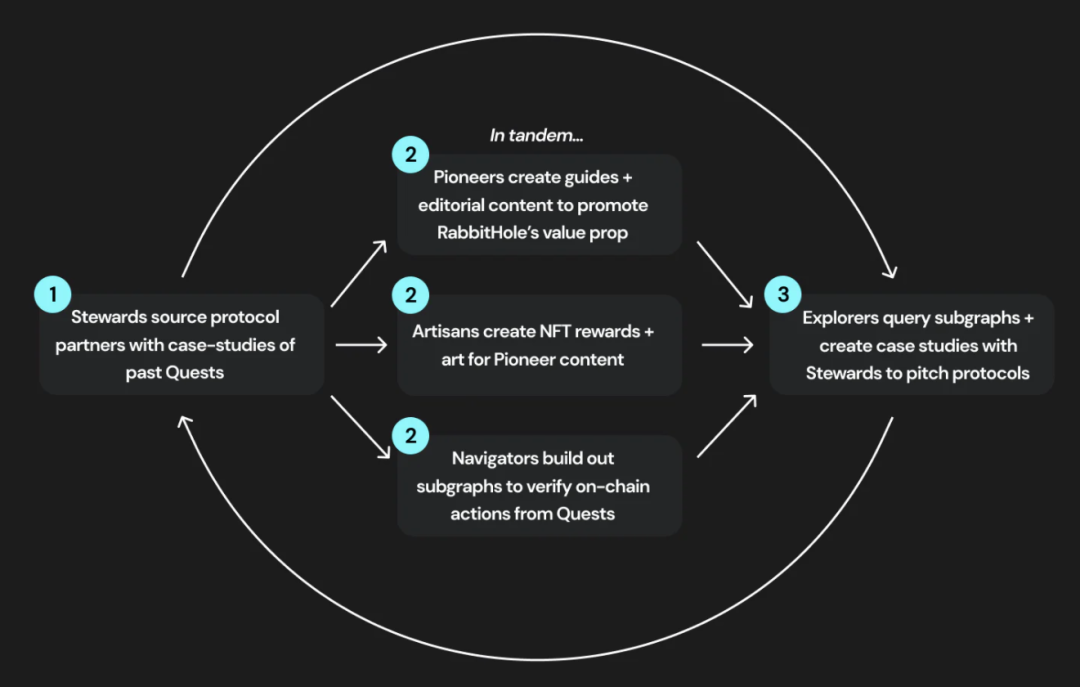
Admins find partnership agreements and earn 1% of the value they bring to the DAO
Meanwhile, Trailblazers create tutorials and edit content to guide Rabbit Hole users through various tasks, while Artisans create artwork for NFT rewards in exchange for tokens
As tasks are created, navigators develop the necessary subgraphs to verify proofs of task completion, and maintain rabbit hole protocols
Finally, explorers query these subgraphs, create case studies, and share them with potential partners found collaboratively by administrators
cycle continues...
These groups work in tandem to serve the core rabbit hole protocol, gaining more ownership and governance in the DAO while building an authentication protocol that fits their needs.
Essentially, this ethos of how work is done in The DAO aligns perfectly with our vision for the on-chain contribution value model and the future of work in web3. Once we are sufficiently decentralized, we can use our protocol to issue objective, verifiable, interoperable certificates for the wider web3 ecosystem - certificates created by the community, for the community.
3. Create a neutral and reliable authentication protocol
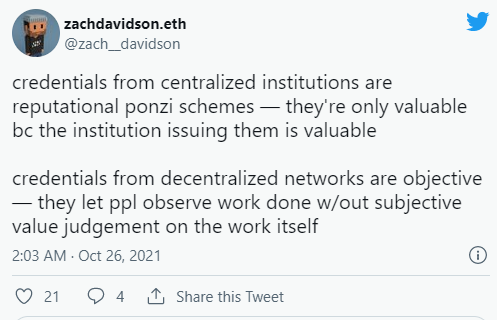
Certificates from a central authority are subjective - they are only valuable because of the value of the authority that issued the certificate. This is a reputational Ponzi scheme.
In contrast, proofs from decentralized networks are more objective — they allow people to observe work done without making subjective value judgments about the work itself.
To create a true contribution model, we need less of the former and more of the latter. To achieve this, we need to have open discussions and build relationships with community members that open the door for their participation (and ultimately the decentralization of our own company).
Decentralization is the only way to have an open and transparent network with objective credentials. In turn, these networks coordinate incentives among all participants, making it easier for newcomers to enter the field.
Think about it: most of your crypto friends already want to bring their friends into the field (since everyone wants to be seen as missionaries), but there's never been an easy way to do that, and there hasn't been a An easy way to track their learning progress. While traditional communities are a great place to start, true ownership comes with financial and social rewards.
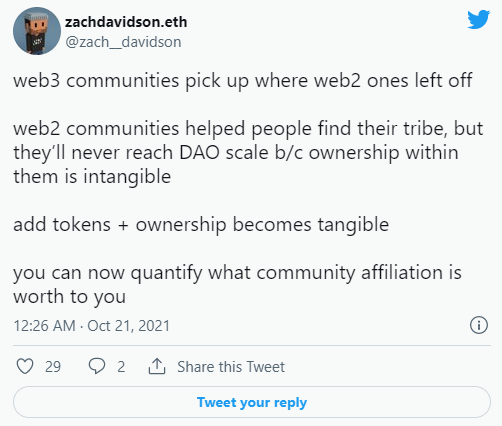
Rabbit Hole has the core ethos of Web3: proactive, transparent, and aligning the web with true ownership of contributors' work and community relationships. Missionaries opt in and mercenaries opt out when everyone owns a part of the network and the success of the network depends on their actions.
This article comes from Tao of Yuan Universe, reproduced with authorization.
This article comes from Tao of Yuan Universe, reproduced with authorization.





